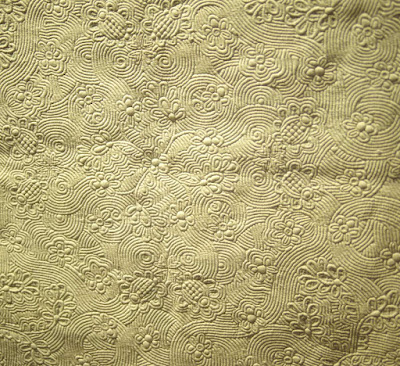Caissargues, France is a satellite community on the outskirts of Nimes in southern France. It is also the home of France Boutis, an association of passionate artisans dedicated to reviving the time honoured needlework tradition of boutis. Boutis is a traditional needlework technique specific to the Provencal region of France. It's origins can be traced to the port city of Marseilles in the 16th century. Here it became a highly popular form of embellishing plain, white cotton fabric and was a much sought-after textile throughout the 18th century. Over later centuries, its popularity declined, but the 21st century has seen a renewed interest in the craft thanks in large part to the active promotion of France Boutis.
As suggested by the title of their recently published book, "Apprendre Boutis et Transmettre", (Learn Boutis and Share), France Boutis has worked tirelessy over the last decade to promote and revive this cherished craft, both in France and beyond.
Since it's first national exposition in 2012, France Boutis has organized a salon every 2 years celebrating this traditional classic, elegant needlework art. At this years exposition, 32 exhibitors were invited to present their work during the 3 day salon, including boutiseusses (stitchers) from Japan, Hungary and myself from Canada.
Every piece on display deserves to be in the spotlight. What is shown below is only a small representation of some of the more traditional pieces that were at the show. Time, patience, precision and a great deal of passion are visible in every piece.













Comments
Post a Comment